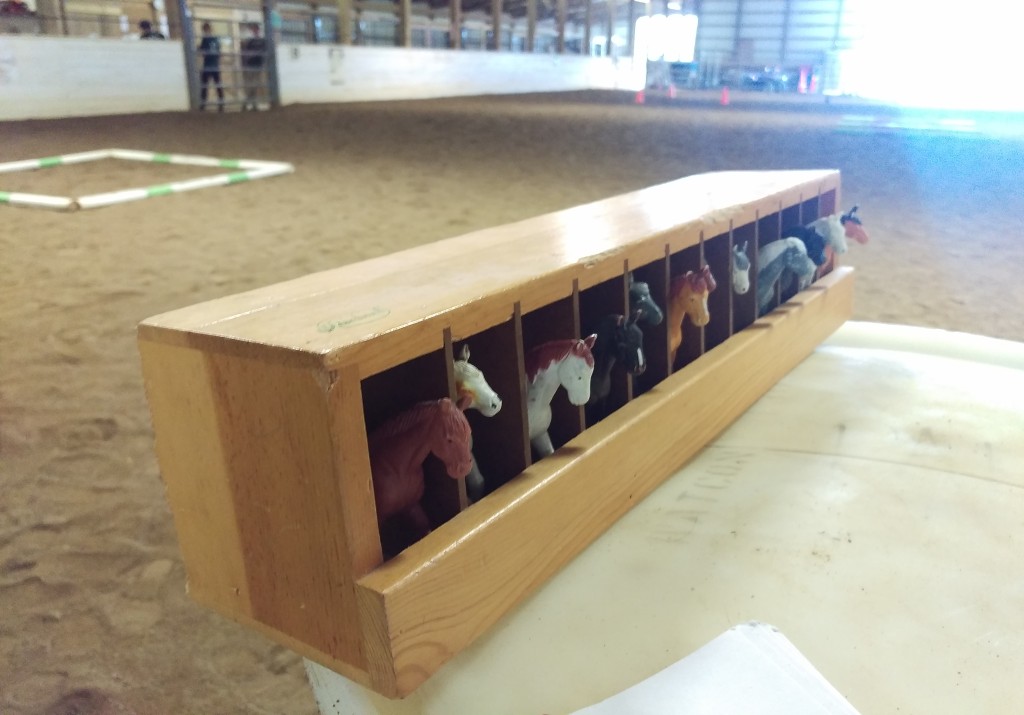I think “Holly’s Horses” sounds so much nicer : ) My coworker Holly uses plastic horses in her lessons to incorporate horse knowledge while they are riding. She uses her daughter’s old Breyers, plastic toys, stables, and saddles for various activities. Here are some ideas for you!
Activities with Plastic Horses
Colors & Markings
- Have a few plastic horses of different colors and markings. Teach the riders the colors and markings.
- Hide the horses around the arena and have the riders find particular ones that you ask them to or that they draw out of a hat.
- Have pictures around the arena of matching colors and markings, and have the riders deliver the horses to them.
- Have the riders then identify their own horse’s color and markings.
Horse Parts
- When teaching horse parts, use a plastic horse as a visual example, pointing out where the parts are. This is great for the parts the rider can’t touch or see on their own horse, such as the hooves or barrel.
- Give the riders sticky notes with horse parts on them to attach to the plastic horse in the correct place. Put the sticky notes in places on their horse they have to stretch to reach.
- Or put the sticky notes on barrels around the arena, each with a plastic horse, and the rider must visit each barrel and put a horse part on the horse.
- Place horse part pictures around the arena and have the rider ride to each one, and point out their volunteers where that horse part is on the plastic horse.
Tack Parts
- If you have a saddle and bridle for your plastic horse, use them to teach tack parts. This is helpful too for areas the rider has a harder time seeing such as the cheek piece and browband.
- Activities can be similar to those for Horse Parts (above).
- Consider using real tack and placing it around the arena. The riders ride to each tack item, identify it, then identify it on the plastic horse.
Horse Care
- If you have a stable for your plastic horses, use it to discuss horse care. Talk about the parts of the barn (stalls, arena, pasture) or what a horse needs to survive (shelter, food, water). Create these area in the arena (pictures, toys, felt), then deliver the horses – turn them out to pasture, time for lessons in the arena, round up back to the barn, etc. To determine which place they need to take them, have them decide, pull options from a hat, or follow the daily schedule of their own lesson horse.
How do you incorporate plastic horses?
Enjoy!
****************
Note: This is not professional advice, this is a blog. I am not liable for what you do with or how you use this information. The activities explained in this blog may not be fit for every rider, riding instructor, or riding center depending on their current condition and resources. Use your best personal judgment!

